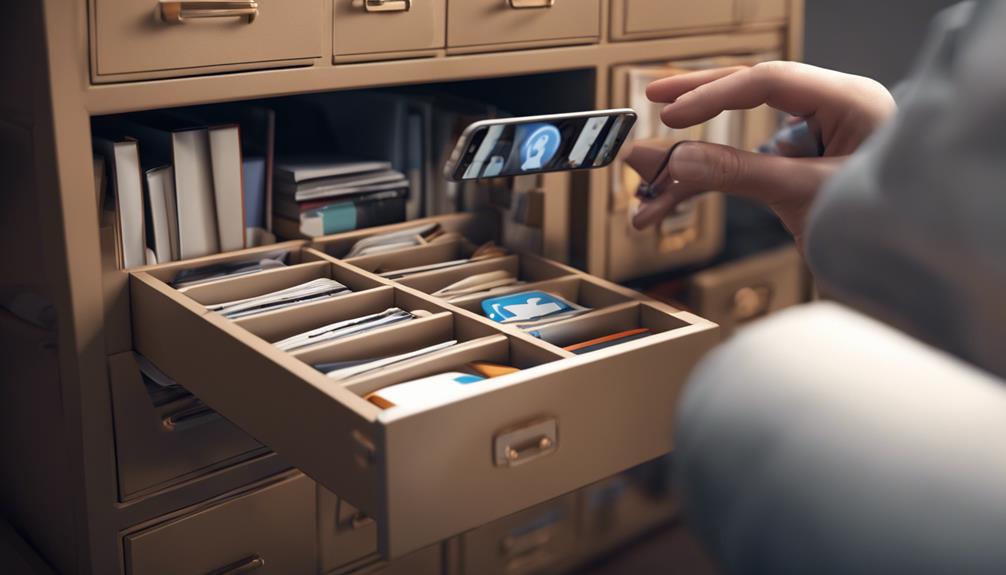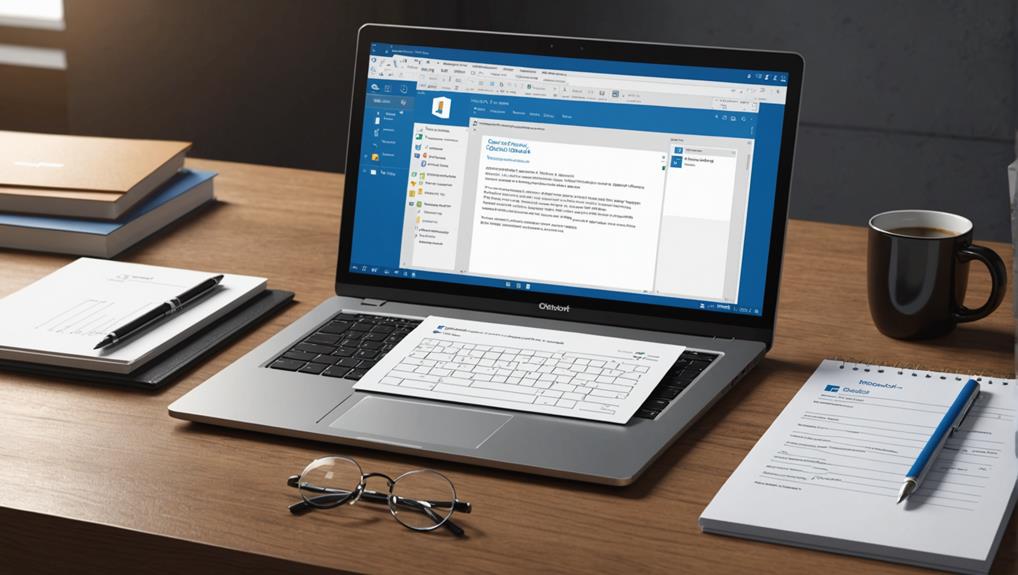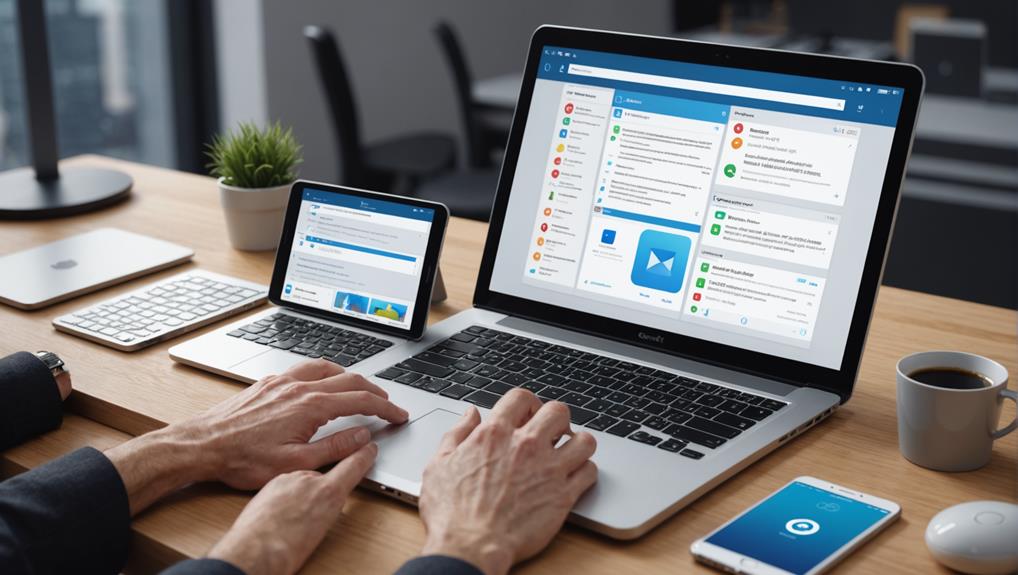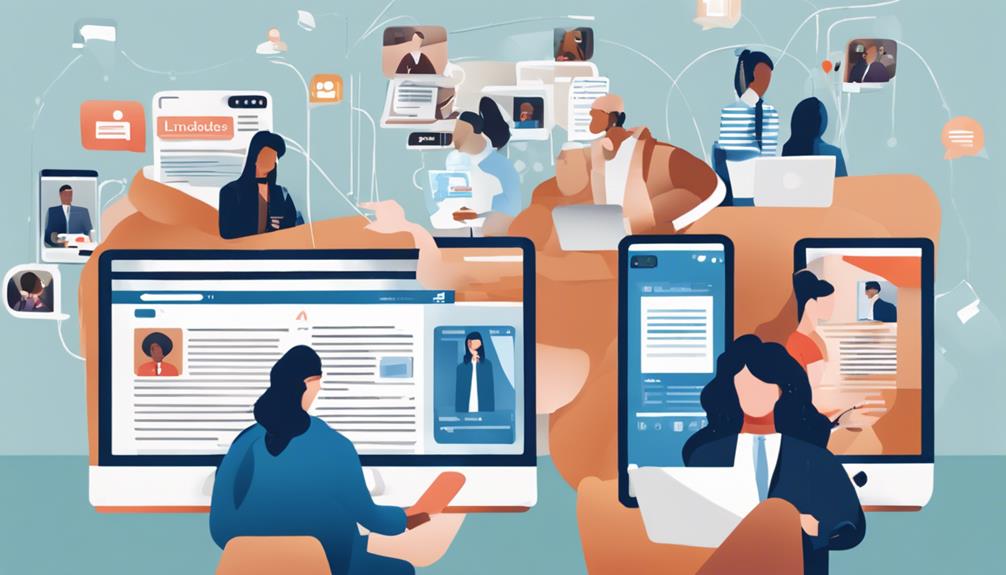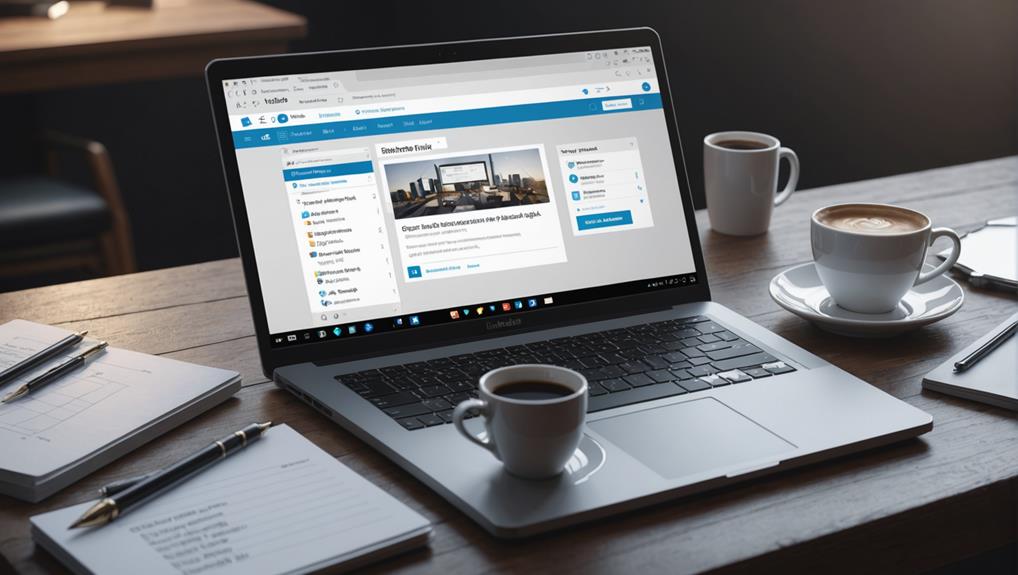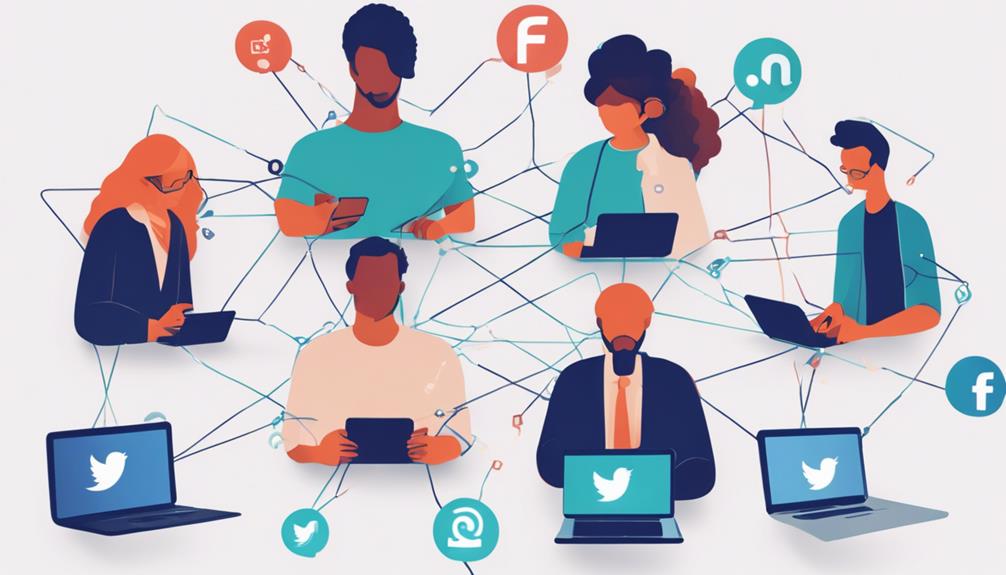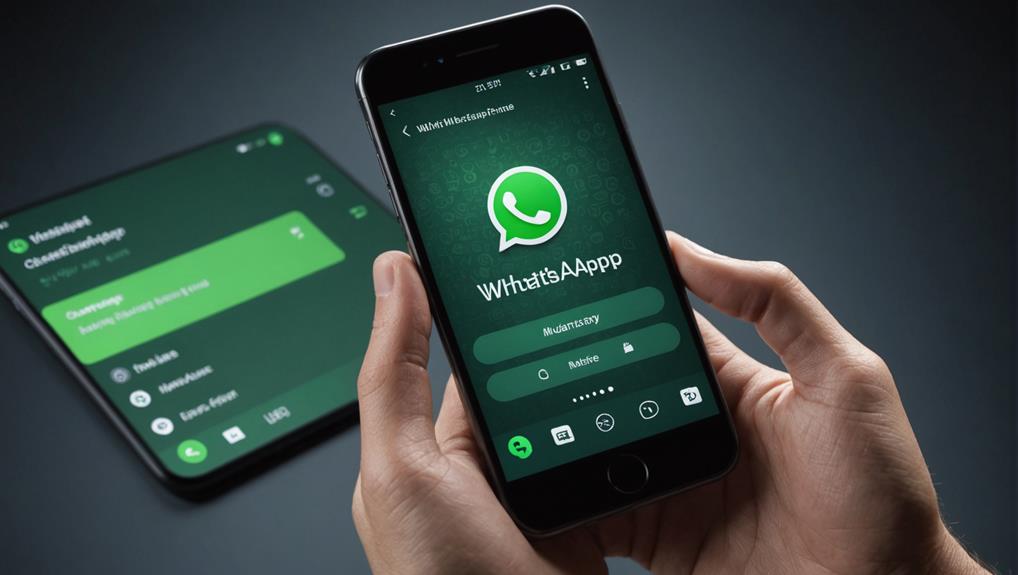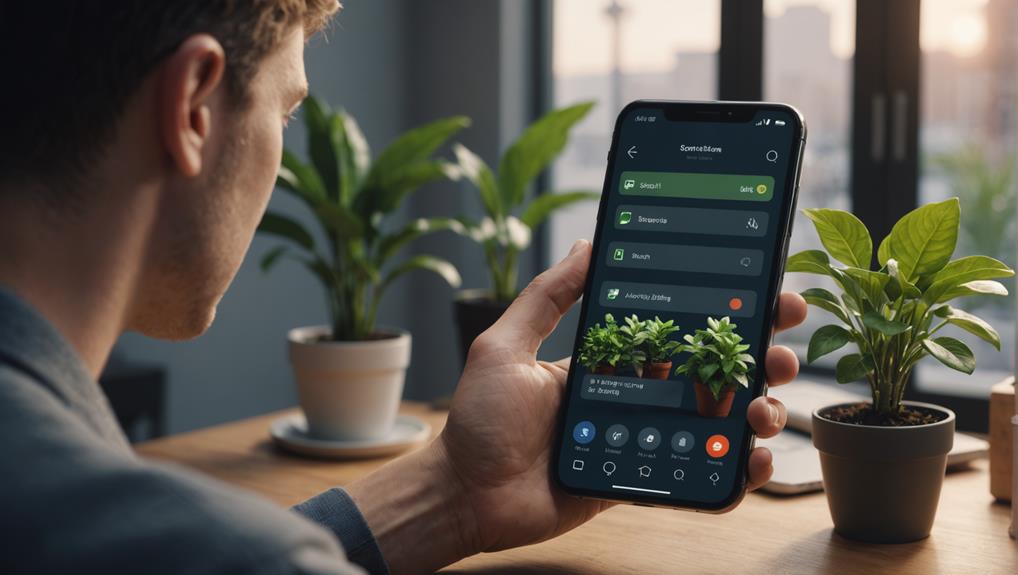
As you navigate the ever-evolving landscape of professional development, it's crucial to tap into resources that elevate your skill set. Top LinkedIn influencers like Helen Blunden and Michael Chen offer a treasure trove of insights on skills training. They're not just discussing trends; they're actively shaping how we understand workplace learning and innovation in tech startups. Engaging with their content could be a game-changer for your career. But what specific advice do they offer that could transform how you approach your professional growth? Stick around to uncover the strategies that could set you apart in your industry.
Overview of Influential Educators

In the realm of skills training on LinkedIn, several educators have risen to prominence, guiding millions with their expertise and innovative teaching methods.
You've probably encountered names like Helen Blunden and Dave Lee, who specialize in workplace learning and performance improvement. They're not just sharing content; they're actively engaging with their followers through workshops and personalized feedback sessions.
You might be wondering how these influencers can help you specifically. Well, someone like Helen offers actionable tips on how to leverage your existing skills and find gaps in your professional development.
On the other hand, Dave focuses on the use of storytelling and visual communication to enhance your learning experience.
It's essential you follow these influencers not just for their content but also for the networking opportunities they present. Engaging with their posts could connect you to other professionals or even potential mentors.
Corporate Training Leaders
Many corporate training leaders have emerged as pivotal figures in the professional development landscape. As you navigate through your career, it's crucial to recognize these influencers who are reshaping how skills are taught in the corporate world.
They're not just teaching techniques but are also masters of implementing strategic training that aligns with broader business goals.
These leaders understand that learning isn't just about knowledge intake; it's about transforming that knowledge into actions that drive business success. They focus on crafting programs that are directly tied to performance improvement, ensuring that the skills employees learn today can be effectively applied tomorrow.
You'll find that they often emphasize soft skills like leadership, communication, and problem-solving—skills that are vital in any business context.
Moreover, these influencers are known for their ability to connect on a personal level, even in large corporate settings, making learning a more engaging and personal experience for everyone involved.
E-Learning Innovators

While corporate training leaders focus on in-person skill development, e-learning innovators are redefining how these skills are acquired digitally. You're witnessing a revolution spearheaded by creative minds who understand that learning isn't confined to a classroom.
These influencers are leveraging technology to make learning accessible, engaging, and effective.
Take, for example, Sarah Johnson, a pioneer in gamified learning platforms. She's shown that incorporating elements of play in e-learning can dramatically increase engagement and retention rates. Following her on LinkedIn, you'll find insightful posts about the psychology behind gamified learning and practical tips to implement it.
Then there's Michael Chen, who focuses on microlearning—breaking complex subjects into small, manageable units that make learning less daunting and more achievable. His techniques show you how to fit education into your busy schedule without feeling overwhelmed.
Lastly, don't overlook Emily White, whose expertise in mobile learning solutions demonstrates that your commute time can also be your classroom. Her strategies help you utilize mobile technology to turn any environment into a space for growth.
Following these e-learning innovators, you'll gain valuable insights into the future of education and training. Keep an eye on their LinkedIn activity; it could change how you approach learning forever.
Career Development Experts
As you progress in your career, staying updated with the latest industry trends and skills is essential. That's where LinkedIn's top career development experts come in handy. They offer invaluable insights that can guide you through the complex landscape of career advancement.
One standout influencer is Michaela X, known for her practical advice on navigating career transitions and enhancing leadership skills. She frequently shares articles and hosts webinars that focus on personal branding and effective networking strategies.
Her guidance is especially beneficial if you're looking to step into a managerial role or pivot to a new industry.
Another must-follow is John Y, whose expertise lies in resume and cover letter crafting. His tips aren't just theoretical; he provides actionable steps that you can immediately apply to make your job applications stand out.
He also critiques real resumes in his posts, offering direct and useful feedback that can help you understand what employers are looking for today.
STEM Skills Advocates

In today's rapidly evolving tech landscape, you'll find invaluable resources in LinkedIn's STEM Skills Advocates. These influencers are at the forefront, guiding you through the complexities of science, technology, engineering, and mathematics.
They're not just experts; they're passionate educators dedicated to making STEM accessible and engaging.
You'll discover professionals like Dr. Hannah Larson, a renowned data scientist, who breaks down machine learning algorithms into understandable segments. Through her posts, you can start to demystify the world of artificial intelligence and find practical applications for these technologies in your daily work.
Then there's Marcus Chen, an aerospace engineer, who shares insights into the latest advancements in space technology. His detailed analysis helps you grasp the significance of new explorations and the engineering principles behind them.
Following Marcus gets you front-row access to the cutting-edge of aerospace developments.
Engaging with these advocates provides you with the tools and knowledge to enhance your own skill set.
Whether you're a student looking to enter a STEM field or a professional aiming to upgrade your technical skills, tapping into the wealth of knowledge these influencers provide is a smart move.
Soft Skills Specialists
You'll also find immense value in following LinkedIn's Soft Skills Specialists, who expertly navigate the often overlooked but crucial interpersonal aspects of professional success.
These influencers focus on enhancing your communication, leadership, and emotional intelligence, which are key to thriving in any workplace.
Take, for example, Dr. Emily Sanderson, a renowned psychologist and corporate trainer. She frequently shares insights on how empathy and effective communication lead to better teamwork and increased productivity.
Following her will give you regular access to workshops and live sessions aimed at boosting your interpersonal effectiveness.
Then there's Michael Chen, a soft skills guru who specializes in conflict resolution and adaptability. His posts often include practical tips and real-life scenarios that help you understand how to manage disputes and maintain positive engagements at work.
His advice is particularly useful if you're looking to step into a managerial role or improve your current leadership style.
Lastly, don't miss out on Sarah Li's content. Her focus on cultural sensitivity and diversity in the workplace has helped many professionals foster more inclusive environments.
Her strategies and insights could be exactly what you need to navigate the complex social dynamics of today's globalized business world.
Entrepreneurial Skill Influencers

Turning to LinkedIn's Entrepreneurial Skill Influencers can significantly enhance your business acumen and innovative thinking. These leaders share their real-world experiences and cutting-edge strategies that you can't find in traditional textbooks.
They're pioneers who've navigated the ups and downs of startups and emerged successful. By following them, you'll gain insights into effective leadership, risk management, and innovation that are crucial for any budding entrepreneur.
Take, for example, Sarah Johnson, a serial entrepreneur whose posts about scaling businesses have helped thousands. She breaks down complex concepts into actionable advice that you can apply directly to your own venture.
Or consider Michael Chen, who specializes in tech startups. His weekly webinars on market disruption and competitive strategy are goldmines for anyone in the tech field.
Don't just passively scroll through their content; engage actively. Comment on their posts, ask questions, and even reach out for mentorship.
Many influencers appreciate eager learners and often provide more personalized advice in direct exchanges.
Frequently Asked Questions
How Do I Connect With Influencers Who Don't Accept Connection Requests?
You can engage with influencers who don't accept connection requests by following them, commenting thoughtfully on their posts, and sharing their content. This boosts your visibility and may encourage them to connect with you.
What Hashtags Do These Influencers Commonly Use?
You'll want to track hashtags like #SkillDevelopment, #CareerGrowth, and #ProfessionalTraining. These are common among influencers sharing expertise in various fields, helping you engage with their content and community discussions effectively.
How Often Should I Comment to Get Noticed by an Influencer?
To get noticed, you should comment thoughtfully on posts at least once a week. Consistency's key, so keep your interactions engaging and relevant to maintain visibility without overwhelming the influencer's notifications.
Do Influencers Offer Personal Mentorship Opportunities?
Yes, many influencers do offer personal mentorship opportunities. You'll need to check their profiles for announcements or direct message them to inquire about such services. They often provide tailored advice and one-on-one sessions.
Can I Collaborate With an Influencer if I'm Just Starting My Career?
Yes, you can collaborate with an influencer even if you're just starting your career. It's a great way to gain visibility and learn directly from experienced professionals in your field.
Conclusion
You've explored top LinkedIn influencers across various domains, from corporate training to entrepreneurial skills. Whether you're boosting your STEM capabilities, soft skills, or career development, engaging with these leaders can elevate your professional journey. Don't miss out on their workshops and webinars. By tapping into their insights and expanding your network, you'll bridge skill gaps and stay ahead of industry trends. Start following them today and take your professional skills to the next level!
The post Top LinkedIn Influencers for Skills Training Insights appeared first on Linkedin Daily.
source https://linkedindaily.com/top-linkedin-influencers-in-skills-training-3/
